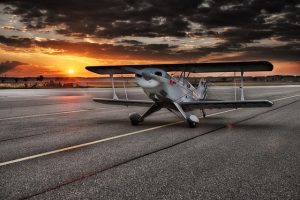
Not all fixed-wing aircraft rely strictly on jet engines to generate thrust. Some of them use one or more propellers. Known as turboprop aircraft, they are typically smaller and limited to shorter flights than larger, jet-powered aircraft. There are fixed-pitch propellers, however, and there are variable-pitch propellers.
The Basics of Variable-Pitch Propellers
A variable-pitch propeller is a type of aircraft propeller that supports angle or pitch adjustments during flight. When flying a variable-pitch propeller airplane, the pilot can increase or decrease the pitch of the propeller. Variable-pitch propellers provide greater control than their static, fixed counterparts.
All propellers have a pitch. It represents the angle between a propeller chord line and the rotation of the plane of rotation. The pitch also affects the distance a propeller travels per revolution. By adjusting the pitch of the airplane’s propeller, pilots can change how far the propeller travels per revolution.
How Variable-Pitch Propellers Work
Most variable-pitch propellers work via a control lever. Located in the cockpit, pilots can use this lever to adjust the pitch of the airplane’s propeller.
Pitch control levers typically support several settings, such as lot pitch and high pitch. A low-pitch setting allows the propeller blades to have a shallow angle. It’s commonly used for takeoffs and ascents due to its ability to increase thrust and provide fast acceleration.
A high-pitch setting, on the other hand, is commonly used at cruising altitudes. It maximizes fuel efficiency while protecting the airplane’s engine from unnecessary wear and tear. Pilots will often increase the pitch of the airplane’s propeller upon reaching cruising altitude.
Some airplanes also support pitch feathering. When set to feathering, the blades of the propeller will be turned so that they are parallel to the airflow. Feathering can prove helpful for maintaining lift if the airplane’s engine or engines fail.
Why Airplanes Have Variable-Pitch Propellers
Airplanes have variable-pitch propellers for several reasons. First, it allows pilots to adjust the angle or pitch of the airplane’s propeller based on the circumstance. Pilots may want to use a low-pitch setting during takeoff, for instance. At cruising altitude, pilots may want to switch to a high-pitch setting.
Airplanes with multiple propellers will often support feathering for safety reasons. As previously mentioned, feathering can help airplanes maintain lift in the event of engine failure. By changing the blades of the propeller so that they are parallel to the airflow, drag will be reduced.



